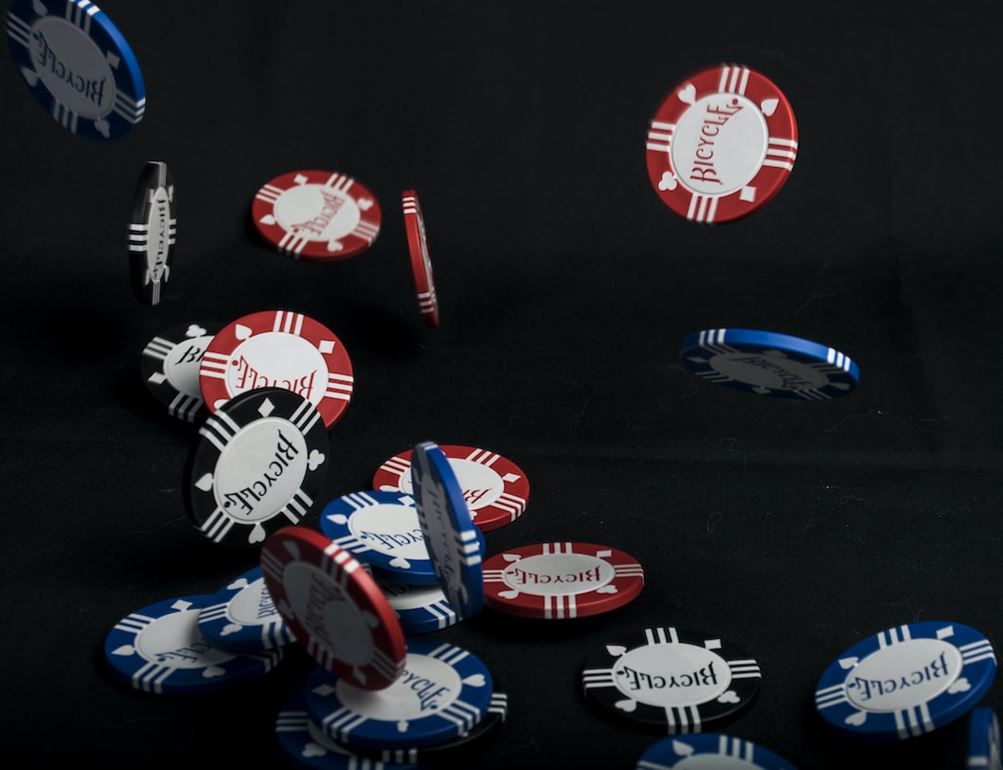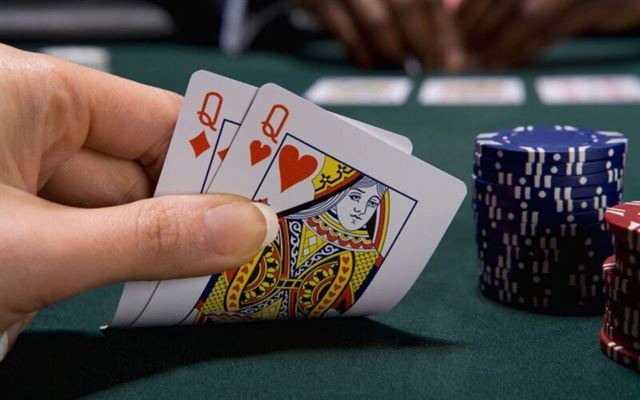Baccarat is a popular casino game that offers players two main betting options: the Banker and the Player. Understanding the odds behind these choices is crucial for players looking to maximize their chances of winning. In this article, we will unravel the odds behind the Banker and Player bets in Baccarat, providing valuable insights for both novice and experienced players.
Understanding the Odds: Baccarat Banker or Player?
In baccarat, the objective is to have a hand with a value as close to nine as possible. The game is played with a standard deck of 52 cards, and each card has a specific value. The numbered cards from two to nine are worth their face value, while the face cards (king, queen, and jack) and the ten are worth zero. The ace is worth one point.
When it comes to betting on the banker or the player, it’s important to note that these terms do not refer to the actual individuals playing the game. Instead, they are just two different options for placing your bet. The banker and the player are both dealt two cards, and the hand with a total value closest to nine wins.
The odds of winning when betting on the banker are slightly higher than when betting on the player. This is because the banker has a slight advantage due to the rules of the game. In baccarat, if the player’s hand totals five or less, they must draw another card. However, if the player stands, the banker must draw a third card if their hand totals five or less. This gives the banker a higher chance of improving their hand and winning the round.
On the other hand, betting on the player offers a higher payout if you win. If you bet on the player and win, you will receive a payout equal to your original bet. However, if you bet on the banker and win, you will receive a payout minus a 5% commission. This commission is taken by the casino to account for the slight advantage that the banker has.
It’s worth noting that the odds of a tie in baccarat are relatively low. A tie occurs when both the player and the banker have the same total value for their hand. The payout for a tie bet is much higher than for betting on the player or the banker, but the odds of a tie are significantly lower. Therefore, it’s generally not recommended to bet on a tie unless you’re feeling particularly lucky.
Exploring the Casino Game: Baccarat Banker vs. Player
In Baccarat, the Banker and the Player are two different hands that are dealt during the game. The objective is to bet on the hand that will have a total closest to nine. It’s important to note that Baccarat is a game of chance, and the outcome of each hand is determined by luck rather than skill. However, understanding the odds can still be beneficial.
When it comes to betting on the Banker, the odds are slightly in favor of this option. Statistically, the Banker hand has a slightly higher chance of winning compared to the Player hand. This is because the rules of the game give the Banker a slight advantage. In Baccarat, the Banker hand is dealt according to a set of predetermined rules, while the Player hand has more flexibility in terms of drawing additional cards.
The odds of the Banker winning are approximately 45.8%, while the odds of the Player winning are around 44.6%. The remaining percentage accounts for the possibility of a tie. It’s important to note that the house takes a commission on winning Banker bets, usually around 5%. This commission is taken because the odds are slightly in favor of the Banker, and it helps to balance the game.
While the odds are slightly in favor of the Banker, it’s important to consider the house edge when making a decision. The house edge refers to the percentage of each bet that the casino expects to win over the long run. In Baccarat, the house edge on the Banker bet is approximately 1.06%, while the house edge on the Player bet is around 1.24%. This means that, on average, the casino expects to win slightly more from the Player bets compared to the Banker bets.
However, it’s worth noting that the house edge on the Banker bet is lower due to the commission that is taken on winning Banker bets. Without the commission, the house edge on the Banker bet would be higher than the Player bet. This is why it’s important to consider the commission when calculating the overall odds and potential winnings.
Decoding the Probabilities: Baccarat Banker or Player Odds
To unravel the odds behind the choices of betting on the banker or the player, it is important to first understand the basic rules of baccarat. In this game, the objective is to have a hand with a value as close to nine as possible. The player and the banker are dealt two cards each, and the values of these cards are added together. If the total value of the cards exceeds nine, the tens digit is dropped, and the remaining digit becomes the value of the hand. For example, if a player is dealt a 7 and an 8, the total value of the hand would be 5 (7+8=15, drop the tens digit).
Now, let’s delve into the probabilities associated with betting on the banker. Statistically, the banker has a slightly higher chance of winning compared to the player. This is because the rules of baccarat give the banker a slight advantage. When the player’s hand totals 0-5, the banker draws a third card if their own hand totals 0-2. If the player’s hand totals 6 or 7, the banker only draws a third card if their own hand totals 0-6. And if the player’s hand totals 8 or 9, the banker does not draw a third card. These rules give the banker a higher probability of winning, making it a more favorable choice for many players.
On the other hand, betting on the player also has its advantages. While the player has a slightly lower chance of winning compared to the banker, the payouts for winning bets on the player are higher. If you bet on the player and win, you will receive a 1:1 payout. This means that if you bet $100 on the player and win, you will receive $100 in winnings. In contrast, if you bet on the banker and win, you will receive a 0.95:1 payout. This means that if you bet $100 on the banker and win, you will receive $95 in winnings. The slightly higher payout for betting on the player can be enticing for some players, despite the slightly lower odds of winning.
It is also worth noting that there is a third option in baccarat called a tie bet. This is when you bet that the player and the banker will have the same hand value. However, the odds of a tie bet are significantly lower compared to betting on the player or the banker. In fact, the house edge for a tie bet is much higher, making it a less favorable choice for most players.
Analyzing the Choices: Baccarat Banker or Player – Which is More Favorable?
When analyzing the choices of betting on the banker or the player in baccarat, it is crucial to consider the house edge. The house edge is the statistical advantage that the casino has over the players. In baccarat, the house edge for betting on the banker is 1.06%, while the house edge for betting on the player is 1.24%. This means that, in the long run, the casino is more likely to win if you bet on the player.
However, it is important to note that the house edge is not the only factor to consider when making this decision. The odds of winning for each choice also play a significant role. In baccarat, the odds of winning for betting on the banker are slightly higher than for betting on the player. The odds of winning for the banker are approximately 45.8%, while the odds of winning for the player are approximately 44.6%. This means that, although the casino has a slight advantage, the banker is still the more favorable choice in terms of winning probability.
Another factor to consider when analyzing the choices of betting on the banker or the player is the commission that is charged on winning banker bets. In baccarat, a 5% commission is typically charged on winning banker bets. This commission is taken to compensate for the slightly higher odds of winning for the banker. Therefore, if you bet on the banker and win, you will receive a payout of 0.95 to 1. This means that for every $100 you bet on the banker and win, you will receive a payout of $95.
On the other hand, if you bet on the player and win, you will receive a payout of 1 to 1. This means that for every $100 you bet on the player and win, you will receive a payout of $100. Although the payout for betting on the player is higher, it is important to consider the commission charged on winning banker bets. When taking the commission into account, the payout for betting on the banker is actually more favorable.
In conclusion, when analyzing the choices of betting on the banker or the player in baccarat, it is important to consider the house edge, the odds of winning, and the commission charged on winning banker bets. While the house edge is slightly lower for betting on the banker, the odds of winning are slightly higher. Additionally, when taking the commission into account, the payout for betting on the banker is more favorable. Therefore, if you want to maximize your chances of winning and receive a more favorable payout, betting on the banker is the recommended choice in baccarat.









